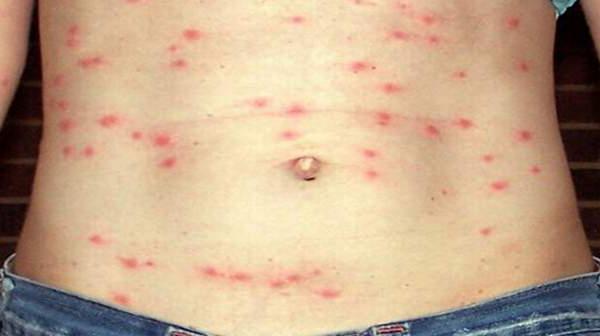With the progressive development of medical science today, some diseases (embolus fever, malaria, typhoid, tuberculosis) still remain, which require a significant contribution to the study of their treatment methods or methods of eradicating them.
Many of them had and are in the form of endemic and pandemics that accompany various social disasters (war, famine). Below we will talk about one of these dangerous diseases.
Even in ancient times, the question "what is typhoid fever" was given a clear answer by Hippocrates. By this term he designated all febrile states proceeding with confusion or with its loss.
What typhoid fever is known today?
The collective name typhoid implies three separate nosological forms. Today the existence is known:
- rash;
- returnable;
- typhoid fever.
They all have different modes of transmission and are characterized by the nature of the disease vectors.
general information
Many well-known facts on all types of typhoid and paratyphoid can be shown graphically in the table.
| View | Pathogen | Carrier |
| Typhoid fever | Salmonella | Sick person or carrier |
Relapsing fever:
Epidemic Endemic | Spirochetes of the genus Borrelia | Lice
Ticks |
Typhus:
Epidemic
Endemic | Rickettsia Provacheka
Rickettsia mooseri | Lice (clothes, head, rarely pubic)
Rat fleas |
Next, consider what typhoid is, and how it manifests itself, specifically for each form.
About typhoid fever more
Infection occurs when contaminated milk, water, vegetables, fruits, bread and other products are taken, as well as when accidentally swallowed salmonella-infected water while swimming in closed ponds.
In the 19th century, accurate descriptions appeared of how typhoid fever flows. This is an infectious disease with an acute course. It manifests itself in the form of a fever, intoxication, rose-like rashes on the skin. Lesions of the lymphatic apparatus in the small intestine are noted, the liver and spleen increase.
The latent period lasts an average of two weeks. The onset of typhoid fever is gradual with common complaints of patients for many diseases: weakness, fatigue, adynamia, headache, sleep disturbance, anorexia (lack of appetite), fever, flatulence (bloating), constipation.
Objective manifestations of the initial period are characterized by: lethargy, bradycardia, dicrotism of the pulse (bifurcation of the pulse beat), muffled heart sounds, dry wheezing in the lungs.
On examination, doctors note a thickened, plaque-coated tongue in the middle is grayish-brown, and from the edges and tip clean, manifestations of catarrhal sore throat, enlarged liver and spleen.
After a week, the maximum development of symptoms occurs: consciousness is disturbed, patients with typhoid are raving, a rose-papular rash appears on the skin in the upper abdomen and in the lower chest. They have low blood pressure. Gastrointestinal symptoms are noted:
- Dry tongue, it is covered with a dense brown or dirty brown coating;
- Pain in the iliac region on the right and rumbling in the abdomen;
- Constipation and severe flatulence.
In blood tests - a decrease in white blood cells, protein is detected in the urine. If the patient is not treated, he dies from complications: intestinal bleeding, perforation (perforation) of the intestine.
About typhus in detail
There are two forms of typhus: epidemic and endemic. Epidemic typhus, also known as European, classic, or head typhus. Other names for it: ship or prison fever. Ways to transfer it from person to person. More often people get sick in the cold season.
The person combes the places of bites of body lice and the feces of insects, along with rickettsia, enter the bloodstream. Bacteria infect the endothelial (inner) layer of small vessels and the person becomes infectious!
The asymptomatic period lasts from 10 days to two weeks. Now, in detail about what is typhus, and how it manifests itself clinically.
The disease begins acutely. Its primary manifestations are chills, fever (temperature lasts up to 40 degrees for two weeks), persistent headache, constant back pain. A few days later, a pinkish spotted rash appears on the skin of the abdomen.

The patient is sharply inhibited, disoriented in time and space, speaks hastily, incoherently and can fall into a coma. If at this time to begin antibiotic therapy in the required dosage, then a person can be saved!
The symptoms of epidemic typhus have been described above. Now a few words about what is typhus endemic rash. It is also called rat, flea or American. It is also called Rickettsia, but of the genus mooseri. This form is more common in the United States. About 40 cases of infection are recorded there annually.
Endemic typhus prefers the warm climate of both hemispheres. Mostly rural residents and mainly in the summer are ill. The disease is much easier than typhus.
What is typhoid fever
If the infection comes from bites of lice infected with spirochetes, then they talk about the epidemic (European) form of relapsing fever. In the event that a person becomes infected after being bitten by an infected tick, it is an endemic relapsing fever.
From the moment of infection to the first attack of the disease, it may take from 5 days to two weeks. The ailment begins suddenly with an attack, when the heat is replaced by a short-term chill, while the body temperature reaches 39 degrees, symptoms of intoxication also appear (headache, joint pain, muscle pain, nausea, vomiting can occur).
The skin of the body is dry with roseolous, petechial, bark or scarlet-like rashes. The face is red. There may be an injection of vascular sclera. The pulse is frequent, blood pressure is low. The liver and spleen are enlarged. In the blood - a reduced platelet count.

This period can be characterized by persistent nosebleeds, hemorrhages in the skin and mucous membranes, hemoptysis, and the appearance of red blood cells in the urine. The height of the attack is characterized by the appearance of meningeal symptoms. The duration of the attack is from 2 to 6 days.
The end of the attack is characterized by a drop in body temperature with profuse sweat. Sometimes a critical decrease in temperature is accompanied by a collapse (blood pressure drops sharply, the skin turns pale, the patient's limbs are cold, he loses consciousness).
When the body temperature returns to normal, the patient's condition improves. The attack can be repeated in a week. European relapsing fever is characterized by 2-5 seizures (if not treated with antibiotics).